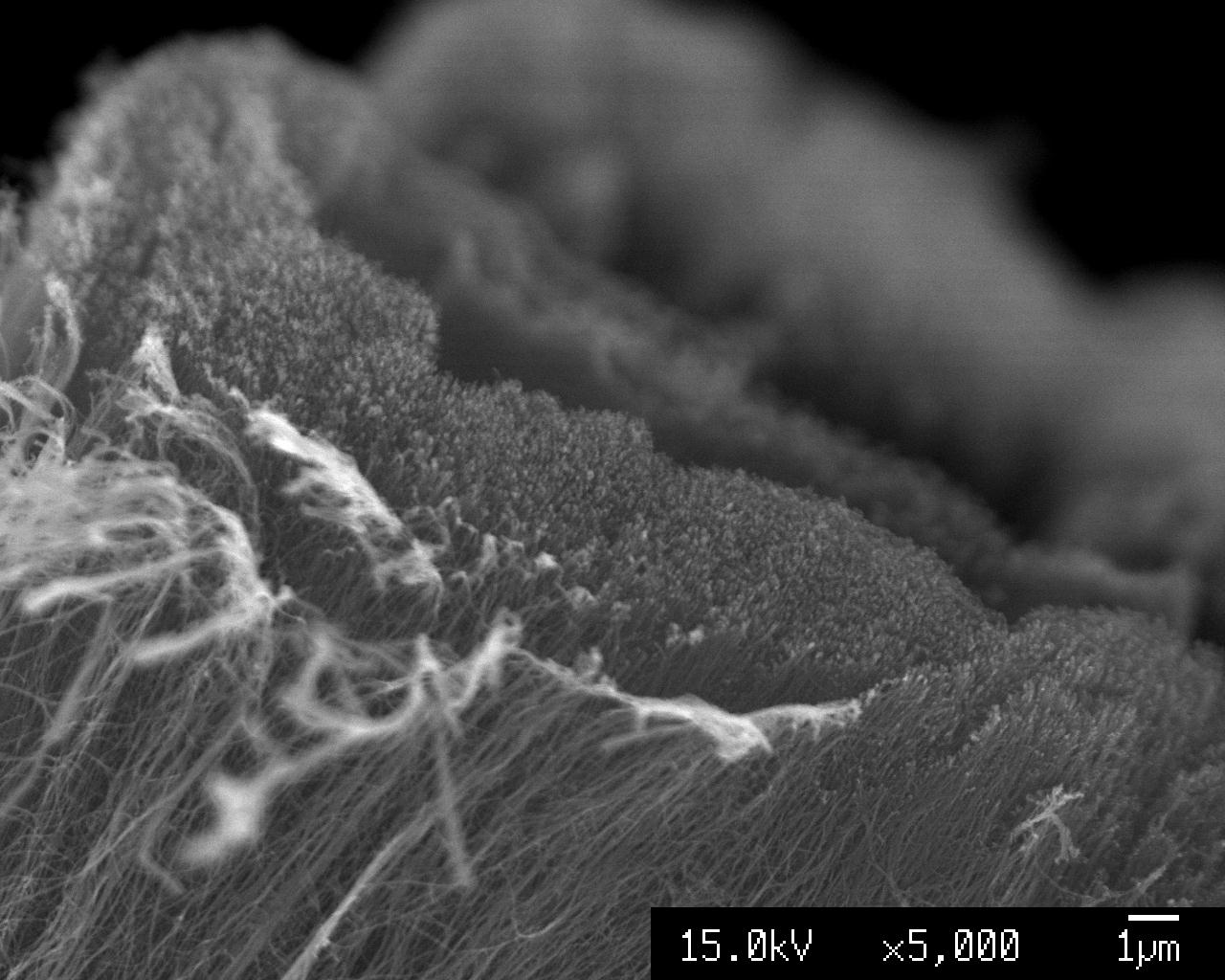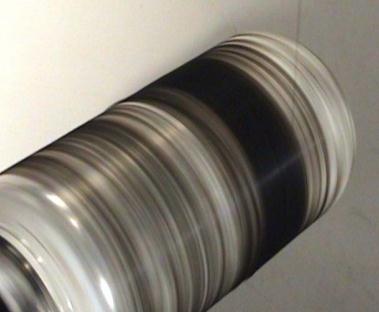Project Researcher: Francisco Orozco
This research focuses on the production of field emission devices with applications from space thrusters to LCD backlights. The material used was carbon nanotubes arranged as fibres and films. Carbon nanotubes have been proven to have good electrical conductivity as well as good mechanical strength. These films and fibres were machined with two different laser sources to identify potential enhancement in emission properties of the material after being processed.
Lasers were used with varying pulse durations; one had nano-second pulse duration (10 ns) while the other had femto-second pulse duration (130 fs). The interaction of a nano-second pulsed laser causes the material to suffer from thermal ablation resulting in melting and ultimately vaporisation of material, leaving heat affected zones through the bulk material.
Ultra-fast laser interaction with matter will reduce these heat affected zones and it is believed that this low modification of the bulk material will produce an emitter with better field emission.
The outputs of this work will provide new production capabilities for future devices with enhanced emitter capabilities enabling industrial scale application of this technology.


Left figure: Ultra-fast laser sectioning of CNT array
Right figure: Spool of multi-walled carbon nano layer
This research was conducted during 2012-2013 as part of the first cohort of the MRes programme within the Centre for Doctoral Training in Ultra Precision at the University of Cambridge, under the supervision of Prof Bill O’Neill and Dr Martin Sparkes sponsored by the USAF.
Contact Francisco Orozco
